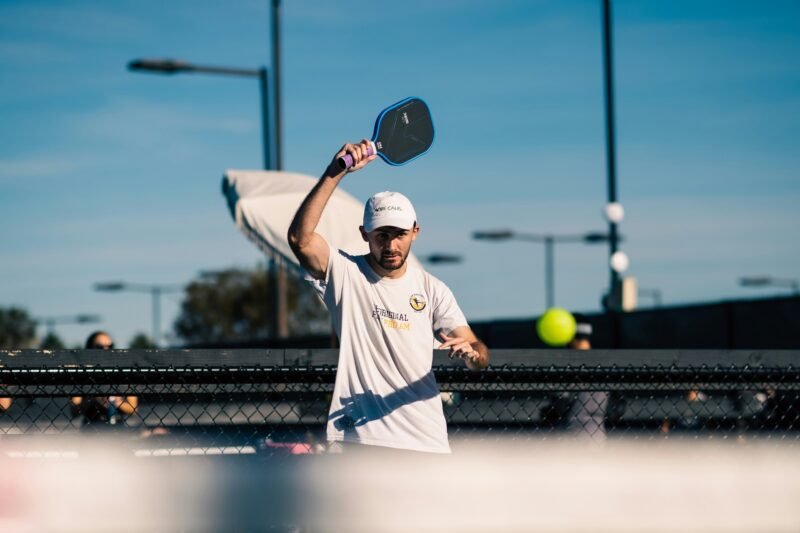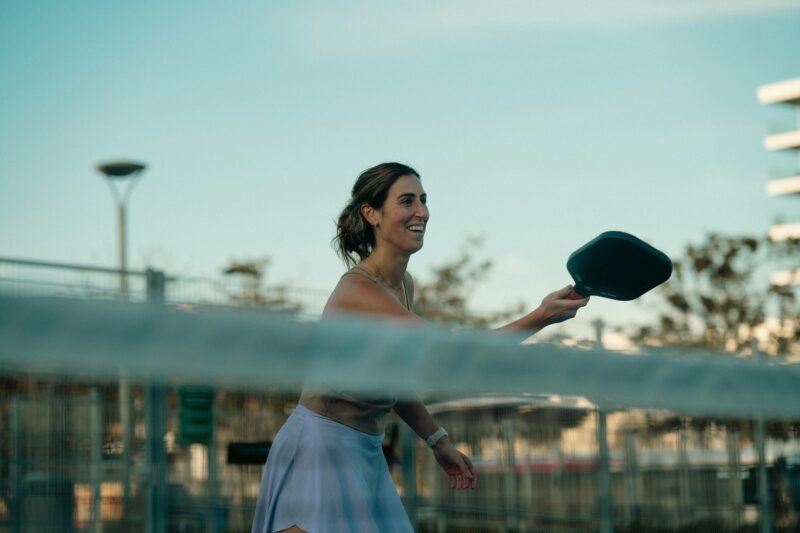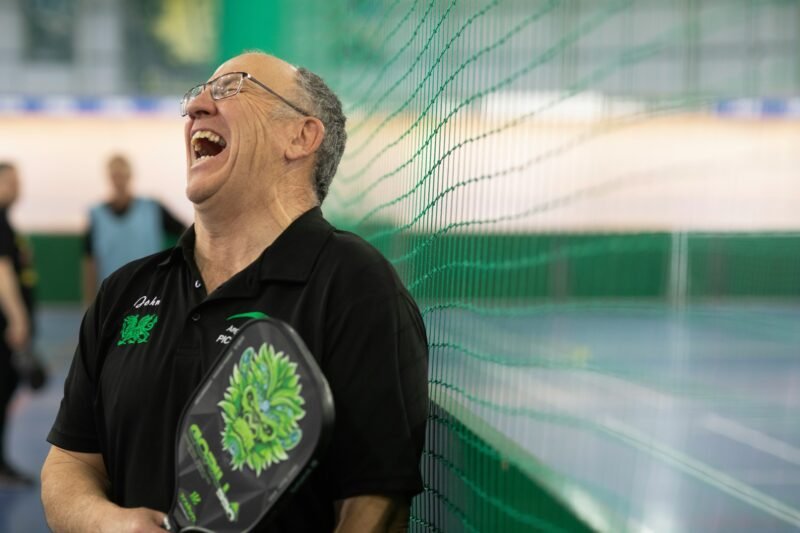How to Practice Pickleball Alone: Solo Drills for All Skill Levels
Prefer to listen? Tap play below!
Mastering Pickleball Alone: Effective Self-Practice Techniques
The sport of pickleball has surged in popularity over recent years, captivating players of all ages. As more people flock to courts, the need for effective practice methods becomes increasingly important. One of the most beneficial approaches to improving one’s game is through pickleball self-practice. This method allows players to hone their skills independently, making it a valuable tool for anyone looking to elevate their performance on the court.
Practicing pickleball alone offers numerous advantages, among them being the opportunity for skill improvement. When players engage in self-practice, they can focus on specific areas of their game, such as serving, volleying, or footwork, without the distractions that often accompany group play. This targeted approach enables players to identify weaknesses and work diligently to transform them into strengths. Moreover, self-practice allows for repetition, which is crucial for muscle memory and overall skill development.

Another significant benefit of practicing pickleball alone is the flexibility it provides in scheduling. Unlike traditional team practices that require coordination with others, self-practice can be done at any time that suits the individual. This flexibility is particularly appealing for those with busy lifestyles, as it allows players to fit in practice sessions around their other commitments. Whether it’s early in the morning or late in the evening, players can take advantage of available court time to work on their game.
In this article, we will delve deeper into the concept of pickleball self-practice and explore various techniques that players can employ when practicing alone. We will discuss drills that can be performed solo, such as wall rallies and target practice, which can significantly enhance a player’s accuracy and consistency. Additionally, we will highlight the importance of setting personal goals during self-practice sessions to maintain motivation and track progress.
Furthermore, we will examine the mental aspects of practicing pickleball alone. Self-practice not only improves physical skills but also fosters mental resilience and focus. Players learn to push through challenges independently, which can translate to greater confidence during competitive play. By embracing the concept of pickleball alone, players can cultivate a mindset that values self-improvement and perseverance.
In conclusion, the growing popularity of pickleball presents an exciting opportunity for players to engage in self-practice. By dedicating time to practice alone, individuals can enhance their skills, enjoy flexible scheduling, and develop a stronger mental game. As we explore the various facets of pickleball self-practice, it becomes clear that this approach is not just beneficial but essential for anyone looking to excel in this dynamic sport.
Understanding the Basics of Pickleball Solo Practice
Pickleball solo practice is vital to skill development for every player. For most people, practicing pickleball alone isn’t as enjoyable, it lacks the social element that drew them in and hooked them. But individual pickleball practice is essential for any kind of skill development. Regardless of your skill level, whether you’re currently getting on with your first rally, or you’re working on improving before a big tournament, I implore you: practice alone, start today.
Pickleball Solo Improves Understanding of the Game
When you’re practicing completely alone, you have time to break down each and every stroke, every aspect of footwork, every shot, whatever you like really. You can understand anything you think you know, and find new game elements to reconsider. This is your perfect opportunity for some self-reflection, a mediation you might say; I like to call it “thoughtful practice.”
In a match, you don’t have the time to give good quality, meaningful feedback for yourself. Keep these thoughts to yourself, remember whatever you were unhappy with, repeat them (on your timeout break or after the match) and work on them the following day. Keep good notes. You will benefit from your reflections.
Pickleball Solo Improves Stroke Technique
Another great aspect of solo practice is the ability to work on your own game, be more of an “individual.” Though you’re working on a commonly recognized skill, you’re able to perform it as yourself, as “you see it.” A solo session to produce a slice forehand, or a topspin backhand, to develop the shots, learn the positioning, the footwork, you can be entirely you, no one else. No pickleball coach will chastise you, nor any doubt-filled paddle partner. You can take your time and just enjoy yourself.

I play alone just to mess around with the shot; see what is actually possible, what’s inconsistent, then work on what has worked regularly, get all of that in some kind of stroke pattern, and remember to use the pattern in play, during matches. Drilling lets you become more consistent. You can play your shots, developing a style and pattern of your own. You are building your own game, as an individual.
Pickleball Solo Makes You a Better Partner
If you have played pickleball for long enough, you will be frustrated from time to time: either the opposing players are messing up your plans to be dynamic and assertive, calling you non-competitive; or, your paddle partner is letting you down. But consider this: you have practiced off-court, written good notes, and remember exactly your plan of attack. If you have taken the time to do this properly, you’re already 5 steps ahead to winning. Focus on yourself and what you can do in your match.
Pickleball Solo Improves Confidence
Practice that dink 1,000 more times. Give yourself the opportunity to reassure yourself that this unfamiliar shot “is going to make me a better player, make us a stronger pair.”
Essential Pickleball Drills for Solo Practice
For those dedicated to enhancing their skills, pickleball drills have become an essential part of their routine. What’s more, these drills can also be practiced alone, which has its own unique benefits. We’ll uncover a few select pickleball drills that are easy to learn and can be performed alone.

Portrait of a young, happy and smiling curly haired girl holding pickleball paddle and a ball on a court
Among the best solo pickleball drills is the ever-popular wall ball. Simply hit the ball against a wall and try to keep it going. Sounds simple enough, but remember this is a drill, you are focusing on your strokes. You should be intently listening for the same sound and trying to feel the same stroke every single time. Try to mix in some variety and move around the room quickly to make it feel more game-like. If you have 10-20 minutes a day to do this, you’ll thank me later. Not only is this a fantastic workout, but it is also the best way to ingrain your strokes and create muscle memory. Having muscle memory for your strokes is necessary for when you’re locked in a third shot drop battle when the game is on the line. A 3 hit shot combination that practices all the kitchen strokes is to hit a speed up, block the rebound, then reset. If done correctly, the reset shot will set up the next speed up hit resulting in a loop that’s repeatable.
Scatter targets around your pickleball court. Work on your serve, third shot drop, cross-court, and down the line shots, aiming for your respective targets. For some people, they like to assign each target a point value, while others are trying to hit each target in sequential order. Try to hit at different ball heights to work on different shots.
Envision yourself working on the footwork to get up to the kitchen from the baseline after a shot, and all the fancy footwork that involves a kitchen dink war. You don’t need a ball, nor a court to become great at footwork. Work on your quick steps, crossovers, drop steps, and shuffling steps. That’s it! If anything, you’ll lower your risk of injury by making your feet and legs stronger and this drill can be practiced anytime and/or anywhere!
Tips for Effective Self-Practice
The first component to maximizing your solo practice is to set some goals. When going out to practice, what do you hope to accomplish? Do you want to improve your serve? Develop quick footwork? Each target can give you a mission to complete during your practice and you’ll know when you’ve crossed it off the list.
To find out if you’re hitting a shot correctly, there’s the classic self-recording method. Set up a camera to record yourself. You can check your form (swing & technique) on each shot, make improvements, delete the recording, then rinse & repeat until you are satisfied with the outcome!
Another big factor to leveling up your pickleball skills is by getting into the practice or courts often. A few tips on this topic include:
- Similar to tip #1, get creative with your drills. This will allow you to make the best use of your time. Achieve many targets in one go.
- Take a little of your daily free time for pickleball. Work up a sweat and get hot in the sun for a little out in the day. Start lightly by getting on the treadmill or train moderately by hitting a pickleball against the wall.
- Use the 15-40 rule. Depending on your age, decide how many minutes you should practice each time. If during the 15-40 minute window you train with intention, you’re all set.
- Bonus Method: The “100-3000 Method”. Another method from Steve Wong, Bobby Riggs, and several other players, is the quick development method to add new shots to your repertoire. Take two shots. This is going to be your hit list. For some, this might be a small sized list but for others, it might be a larger complete list. To give you an example, here’s what could be in a list:
- Fix My Serve
- Deep Returns of Serve
- 3rd Shot Drop / Short Game
Whatever your list size, take it slow. Take it one hit at a time. Train the same shot over and over again until you get it. Over a period of time, your tools will begin to develop muscle memory. This will give you the ability to feel free from having to know what situation you are in. It will allow you to be creative in the moment and to set up traps or to be one step ahead of your opponents.

Creating a Structured Practice Routine
Design a well-rounded plan. Having a balanced routine to practice different aspects of the game is key to developing a well-rounded skill set. Design a practice schedule for serving, volleys, soft shots (dinking), pickleball therapy (mental fortitude), and court positioning. Don’t get stuck doing the same things in every session. Target all aspects of pickleball performance. Variety is the key to a fun and rewarding practice routine. Training alone in pickleball can absolutely give a player a chance to improve on some weak parts in their game.
We can’t emphasize enough the importance of drilling as it is the most effective technique to improve quickly. Training alone can provide a deeper understanding of the logic of the game. Don’t just go to the courts and do some mindless drilling, create a plan or roadmap of what you want to practice.
Other Articles
Pickleball Tips for Playing with Hearing Loss
Pickleball Tips for Playing During Pregnancy
Pickleball Tips for Playing with Disabilities
Pickleball Tips for Playing with Injuries
Pickleball Tips for Playing in Humid Conditions
Pickleball Tips for Playing in High Altitude
Pickleball Tips for Playing on Wet Courts
Pickleball Tips for Playing at Night
Pickleball Tips for Playing in Cold Weather

